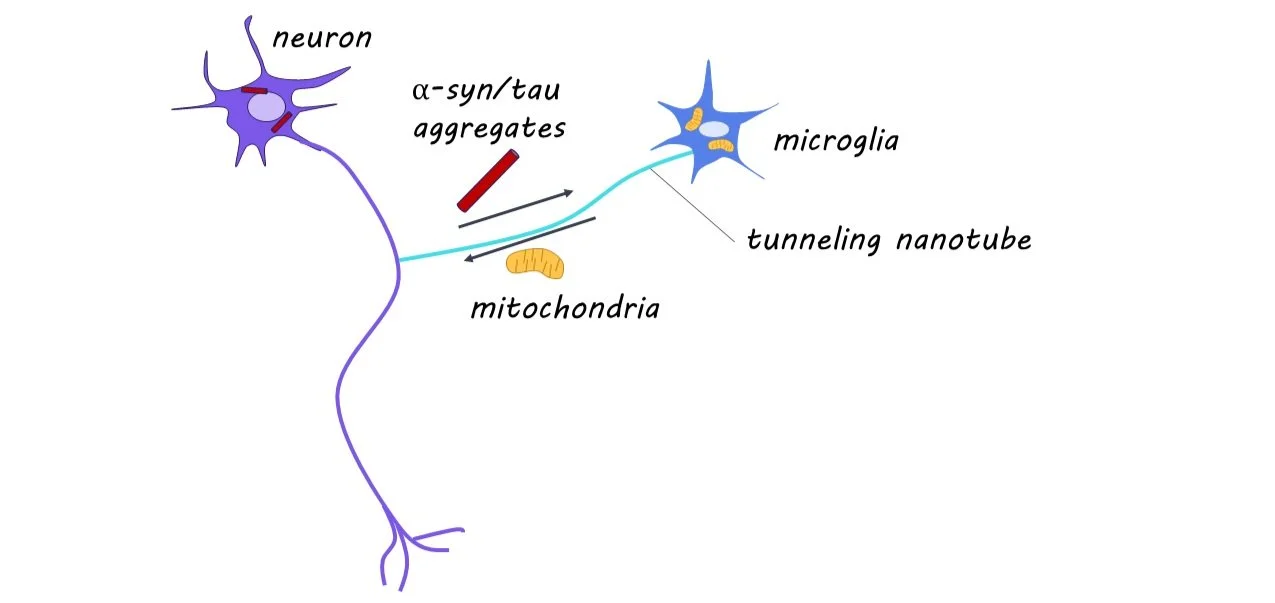Orexin Neurons Mediate the Decision to Exercise Instead of Eating
Post by Shahin Khodaei
The takeaway
When mice are actively deciding between exercise or eating a tasty treat, the activity of a group of neurons in the lateral hypothalamus called orexin neurons plays a role in mice prioritizing exercise.
What's the science?
When given the choice between exercising or eating something, what part of the brain helps make the decision? One possibility is the lateral hypothalamus, an evolutionarily old region of the brain that plays a part in regulating both eating and movement. Specifically, research shows that a group of neurons called hypocretin/orexin neurons (HONs) in the lateral hypothalamus is important for these behaviours. What is not well-known is whether HONs also play a part in the decision between whether to eat or exercise. This week in Nature Neuroscience, Tesmer and colleagues published a study that looked at the role of HONs in this scenario and showed that the activity of these neurons played a part in mice prioritizing exercise over eating a highly palatable food.
How did they do it?
To study their decision-making process, the authors placed mice in the center of a maze with 8 arms. Each arm contained something different, giving the mouse multiple options to choose from (e.g. regular food, a new object, another mouse, etc.) Importantly, one arm contained a running wheel so mice could voluntarily exercise, and another arm was either empty or contained a tasty milkshake treat (the highly palatable food). This setup allowed the researchers to see if the mice chose exercise over the other options, particularly the milkshake.
To parse out the role of HONs in this decision-making process, the authors either decreased or increased their function. They either injected mice with a pharmacological blocker for orexin receptors or increased the activity of HONs using a technique known as optogenetics. Tesmer and colleagues also used a technique called fiber photometry to indirectly measure the electrical activity of HONs. This let them see how the activity of these neurons changed when mice used the running wheel or ate the milkshake.
What did they find?
When the authors placed the mice in the maze for 10 minutes, mice consistently chose to use the running wheel more than any other option, even when the maze contained the milkshake treat. The authors called this temptation-resistant voluntary exercise. They then injected mice with the pharmacological blocker of HON function to see how it impacted the choices mice made. If the milkshake was not in the maze, mice kept choosing exercise over all other options. When the milkshake was present, however, mice that received the blocker no longer chose exercise over milkshake, spending less time on the running wheel and more time eating. On the other hand, when the activity of HONs was increased using optogenetics, the mice spent even less time eating the milkshake.
Tesmer and colleagues then performed more experiments to understand exactly how HONs regulate this decision. Does HON activity make milkshakes inherently less appealing? No – when they blocked HON function in a maze with milkshake but no running wheel, the mice didn’t eat any extra milkshakes. Does HON activity make running inherently more appealing? No – when they blocked HON function in a maze with the wheel but no milkshake, the mice didn’t run any less. Instead, altering HON function only changed behaviour when BOTH the running wheel and milkshake were available as options – meaning that in a situation where mice are actively deciding between exercise and eating something highly palatable, HON activity leads to prioritizing exercise. The fiber photometry experiments support this notion: the activity of the HONs negatively correlated with milkshake eating, and positively correlated with wheel running.
What's the impact?
This study provides compelling evidence that HONs in the lateral hypothalamus play a role in the decision-making process between exercise and highly palatable foods. Of course, there is more work to do to determine if HONs play a similar role in human brains. This study takes a valuable step in understanding the neural foundations of such decisions, which can have important consequences for global health.


